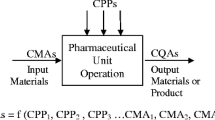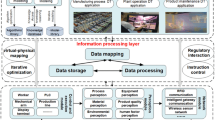Abstract
To achieve quality improvement in manufacturing environments, the design of experiment (DOE) and Taguchi methods are two efficiency approaches to address such problems. Applying those methods to resolve quality improvement frequently focuses on the measurable quality response (or quantitative response). However, the complexity of products or processes is gradually increased and due to the limitation of measuring equipment, the quality response could not be directly measured. Visual inspection or measurement is then used to judge the quality for nonmeasurable response (or qualitative response). Basically, for assessing the quality of a qualitative response, it is initially divided into several classes or ordered categories. As for customers’ requirements gradually changing and applications’ flexibility gradually increasing, a dynamic structure for this process will be another important consideration for manufacturers. That is, it causes the work of quality improvement to be dynamically analyzed. Dr. Taguchi had proposed a dynamic method to analyze such issues. However, only several studies focused on quality improvement of a qualitative response during the static characteristic. Parameter optimization approaches were seldom proposed to address quality improvement of a qualitative response with the dynamic characteristic. Therefore, in this study, we proposed an integrated parameter-optimization approach to resolve quality improvement of a qualitative response with dynamic characteristics. An illustrative example, quality improvement of lead twist during the stamping process for lead frame manufacturing at Science-based park in Taiwan, is employed to demonstrate the effectiveness of the proposed approach.
Similar content being viewed by others
References
Chen CK (1994) Applying fuzzy set theory to parameter optimization for multiple response in Taguchi’s off-line quality control. Thesis, Department of Industrial Engineering and Management, National Chaio Tung University
Chen SJ, Hwang CL (1992) Fuzzy multiple attribute decision making: and Applications. Springer, Berlin Heidelberg New York
Hsieh KL (2001) Process improvement in the presence of qualitative response by combining fuzzy sets and neural networks. Integr Manuf Syst 12:449–462
Jean Y-C, Guo S-M (1996) Quality improvement for RC60 chip resistor. Qual Reliabil Eng Int 12:493–445
Klir GJ, Folger TA (1988) Fuzzy set, Uncertainty and Information. Prentice-Hall, Inc., New Jersey
Lai Y-J, Chang T-H (1994) A fuzzy approach for multi-response optimization: an off-line quality engineering problem. Fuzzy Set and Syst 63:117–129
Lunani M, Nair VN, Wasserman GS (1997) Graphical methods for robust design with dynamic characteristic. J Qual Technol 29:327-338
McCaskey SD, Tsui KL (1997) Analysis of dynamic robust design experiment. Int J Prod Res 35:1561–1574
Nair VN (1986) Testing in industrial experiments with ordered categorical Data. Technometrics 28:283–291
Phadke MS (1989) Quality Engineering Using Robust Design. Prentice-Hall, Inc., New Jersey
Su CT, Hsieh KL (1998) Applying neural networks to achieve robust design for dynamics quality characteristic, Int J Qual and Reliabil Manage 15:509–519
Taguchi G (1966) Statistical analysis (in Japanese). Maruzen, Tokyo
Tong LI, Su CT (1997) Optimizing multi-response problems in the Taguchi method by fuzzy multiple attribute decision making. Qual Reliabil Eng Int 13:25–34
Wasserman GS (1996) Parameter design with dynamic characteristic: a regression perspective, Qual Reliabil Eng Int 12:113–117
Zadeh LA (1973) Outline of a new approach to the analysis of complex systems and decision processes. IEEE Trans Syst Man Cybernet 3:28–44
Zadeh LA (1965) Fuzzy sets. Inf Control 8:338–353
Author information
Authors and Affiliations
Corresponding author
Rights and permissions
About this article
Cite this article
Hsieh, KL., Tong, LI. Process quality improvement of a qualitative response with dynamic characteristic. Int J Adv Manuf Technol 25, 1180–1190 (2005). https://doi.org/10.1007/s00170-003-1962-x
Received:
Accepted:
Published:
Issue Date:
DOI: https://doi.org/10.1007/s00170-003-1962-x




